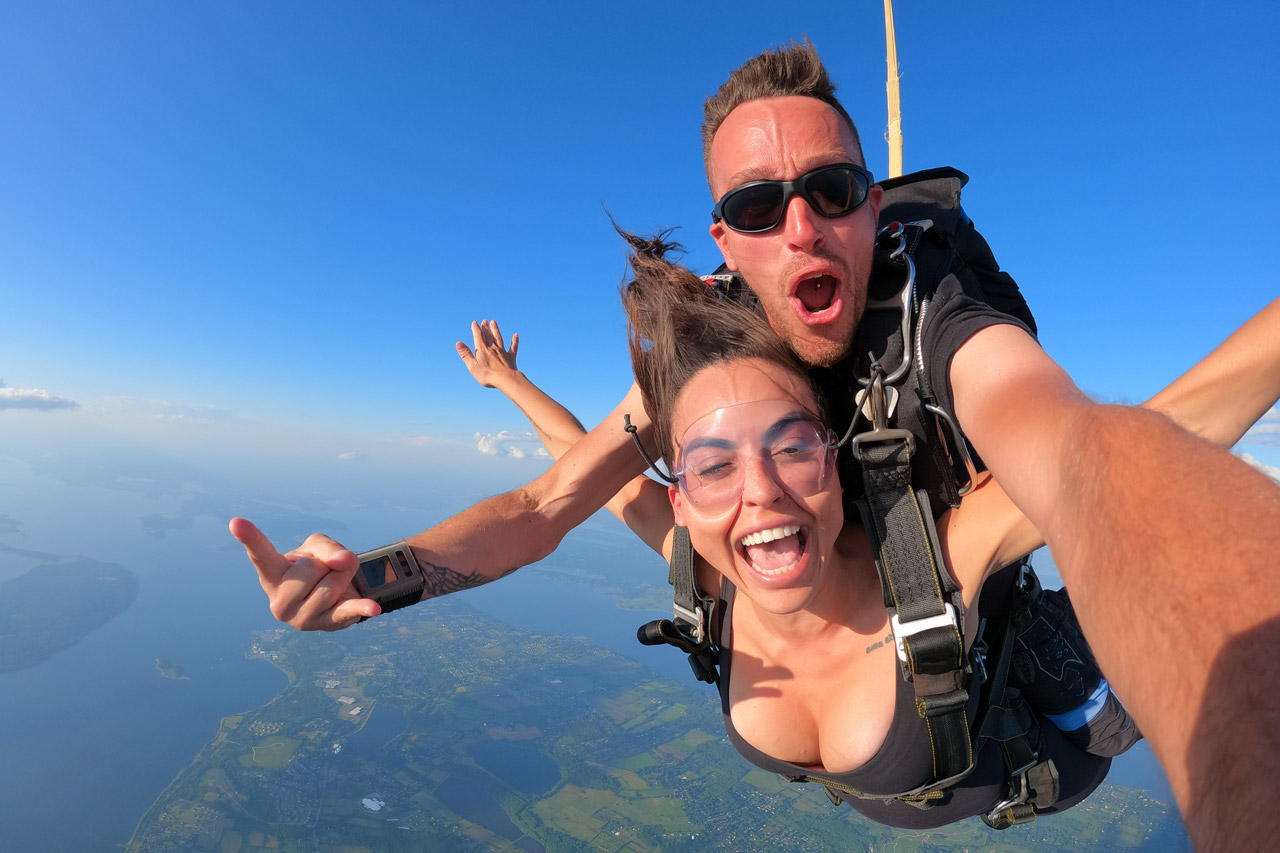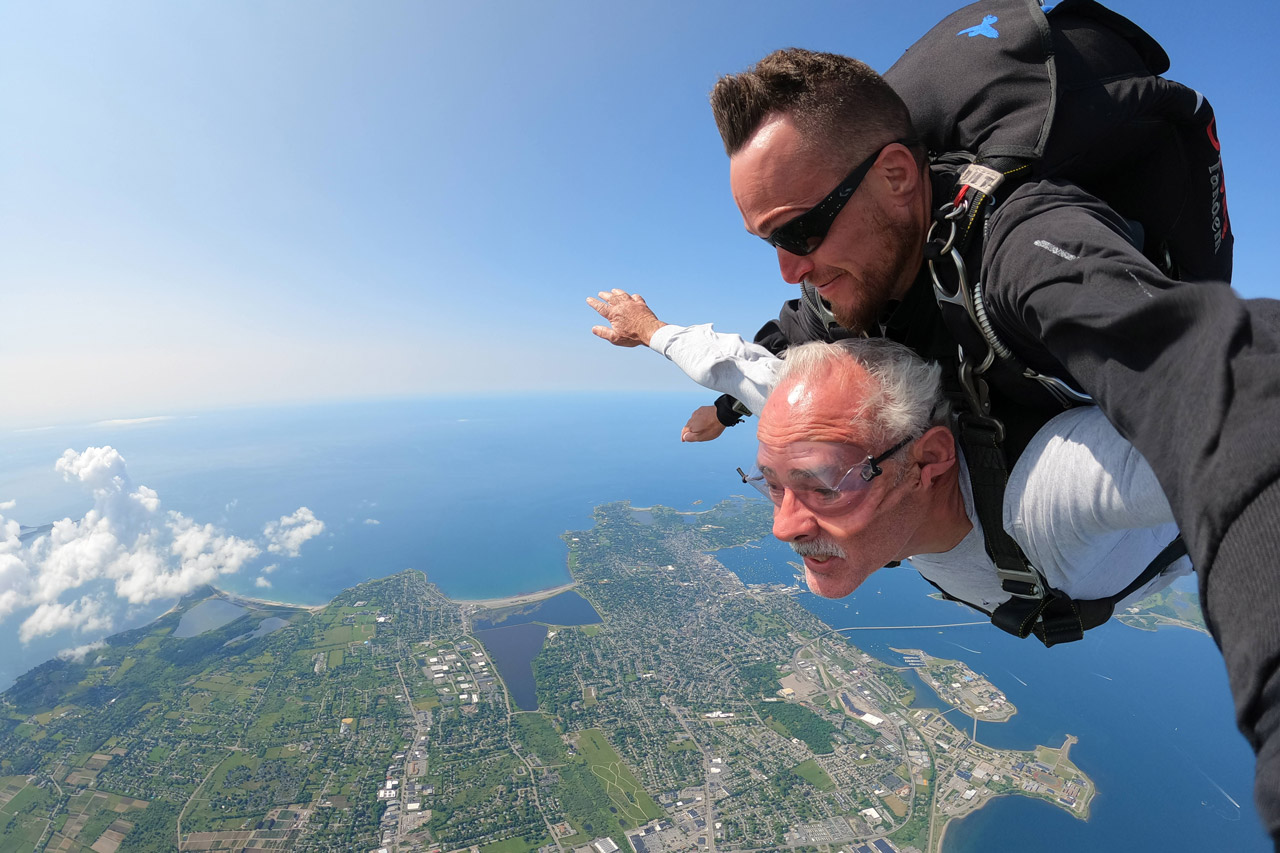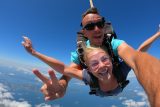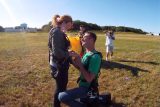So You Booked Your Jump, What About Weather?
General
Posted by: Skydive Newport
8 years ago
No matter the location, every skydiving center in the United States can, on occasion, be faced with weather conditions that will limit or prevent their ability to skydive on that day. Many prospective students wonder what those conditions are, and why one sunny day is perfect for jumping, while another (just as sunny) may not be. Indeed trying to explain this to a student (especially one who is totally amped up for their first jump) can be a huge buzzkill for that student, and can sometimes breed resentment or anger (understandably so). We wanted to give all past, present, and future students a quick briefer in aviation weather and how it affects skydiving.

Rain
Understandably, the first general no-go situation is rain. Raindrops fall much slower (about 20 mph) than a human does in freefall (which is typically 120mph). Therefore, you would be encountering droplets of water at around 100mph, which typically feels like being sandblasted on any exposed skin. While it does not affect the operation of the parachute equipment in any way, it is very uncomfortable and will be a less-than-enjoyable skydive. Being such an expensive experience, we really want you to enjoy it. Also, there are many occasions where it may be raining at altitude (<10,000 feet) but evaporating before it hits the ground. We constantly review both ground precipitation radar maps as well as atmospheric maps, so we may call off a jump even though no rain appears to be hitting the ground at that time. If we notice that there may be precipitation around the time of your jump, we will try to keep you abreast of the situation.
Clouds
The second condition which could prevent jumping is an overcast or broken layer of clouds below our jump altitude. FAA regulations require that we maintain certain visibility requirements during skydiving operations, and that includes remaining clear of clouds and overcast layers. The purpose of this is to ensure we have visibility to see other aircraft, and other aircraft can see us. These cloud layers may form at a different altitude each day, and sometimes there may be multiple layers at different altitudes. As long as this layer (or layers) is/are not solid (overcast) or below our jump altitude, we can continue jumping as long as there is a clear area to jump in. Also, especially during the spring and fall months, there can be the chance of low level fog (which is treated the same as a cloud layer). The same rules apply, being that we need to have visibility in order to engage in jumping operations. The good news is that we do receive reports about cloud altitudes and forecasts for the changes throughout the day, and try to keep you updated accordingly on the day of your jump.

Wind
Finally, and the most important safety-wise are winds. High or gusty winds can be a very large safety issue if not responded to accordingly. Modern-day parachutes are essentially inflated wings, with openings in the front to allow air to enter and pressurize the wing. This also provides the structure for that wing and allows it to create lift for the soft landings that are the standard in skydiving today. However, the performance of the parachute is reliant on smooth and/or lightly variable winds. When winds are exceptionally strong, gusty, or shift wildly from one direction to another, it can create a very unsafe situation for landings and greatly increases the chance of injury. We constantly monitor the ground winds to ensure they are within a safe and navigable envelope to ensure your safety to the greatest of our ability. There is always risk in skydiving, but much of that can be mitigated with diligent safety procedures. Occasionally there will be issues with upper level winds (known in the aviation world as “winds aloft”), where they may be too strong at too low of an altitude for a safe navigation back to the field. We do receive reports about these situations (and forecasts for both ground winds and winds aloft), so we will always try to keep you abreast if we forsee an issue on the day of your jump.
In the end, our goal is absolutely your safety on every single jump here at Skydive Newport. We wouldn’t boast the best safety record in New England if it wasn’t! There is never a case that we would sacrifice safety to make a buck. It’s not smart nor is it ethical. We always recommend you give us a call before leaving your house on the day of your jump to check the conditions forecast for your jump time. We will make the call on whether or not it is a good day (or time) to jump, and can give you the option to come to the field (if it is an iffy day to skydive), or reschedule to a more desirable day. In the case that you do show up for your jump and the conditions deteriorate to an unsafe situation, we will refund your money on the spot and give you the option to reschedule to a later date (unlike other centers that keep deposits or offer “rain checks”, etc). We like to be upfront and honest with all of our students about our passion for skydiving, and the love of sharing it with everyone who wants to experience it in the safest and most beautiful location possible.
Please call us anytime with your questions at (401) 845-0393. We can’t wait to join you in the air!




